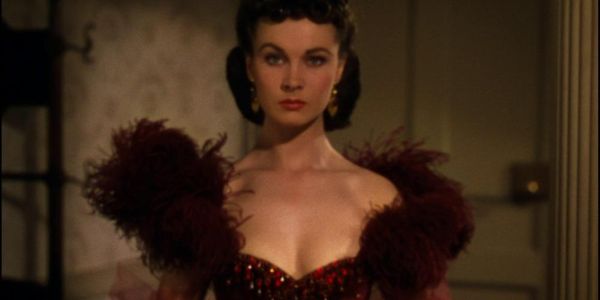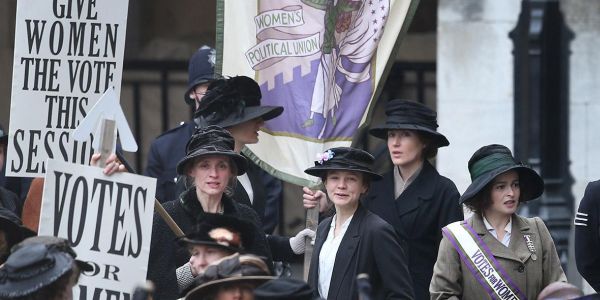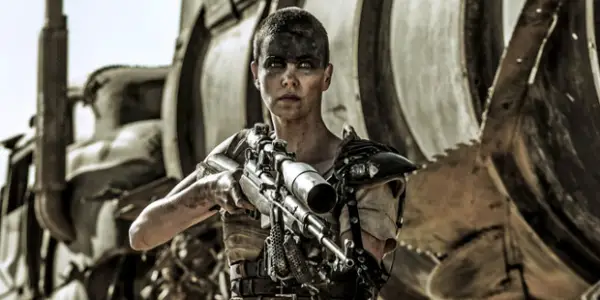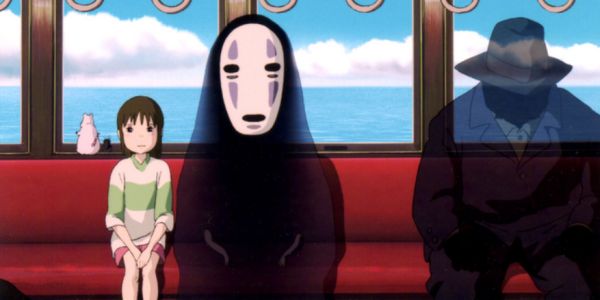The Need For A New Baseline – Women In Film: Past, Present, Future

Manon de Reeper is the founder and CEO of Film…
Editor’s Letter Essay of week 41
Since Film Inquiry’s inception it’s been our goal to promote diversity in film. Admittedly, I always think of diversity in film in the broadest sense for Film Inquiry: include and promote women, minorities, the LGBT community – and international and independent film, too. Film is the medium and art form through which we learn about the world. They shape our way of thinking and understanding of the world already from a very early age.
It’s not uncommon for film to be referred to as our “window to the word” in academia, as most of us (thankfully) don’t experience what people do in film. Film, however, often is inspired by reality, and vice versa. Watching film teaches us about the world, and teaches us to sympathise. This is ever so important in a Western world where you’re increasingly encouraged to be suspicious of strangers, your neighbours. Not only does film teach us about the motivations behind someone’s actions, however adverse – we can even learn to sympathise with them. However, it’s fair to point out that there are also those films that emphasise on negative stereotypes, and can teach us the wrong things. The power of film and story cannot be underestimated.
Over the past week I’ve been having some great conversations, with Tema from Julia Smith about women in film, and about women making film. They have been greatly inspiring and I took away a lot from these conversations, and I thought I’d write down my thoughts. Bear with me.
Perpetuating inequality
Historically, women have been excluded from mostly everything important in society. The first country to give women the right to vote (unconditionally) was New Zealand in 1893, but it wasn’t until 1920 that the U.S. gave all women the right to vote, and not until 1928 that the U.K. allowed all women to vote, under the same conditions as men. For the U.S. and the U.K., that’s less than a hundred years ago. As far as history goes, that’s a tiny amount of time. Organic change of cultural norms and values takes more time than that.

To this day, gender inequality is an issue. In many Western countries, women are still systematically paid less than men in the same jobs. Men wanting to be a stay-at-home-dad or to take on (what’s thought of as) feminine occupations are frowned upon. Of course, the paradigm has been slowly shifting for the past 40 years or so due to the concerted efforts of women’s movements, but society has yet far to go.
How does that apply to film?
So, with having been excluded from many aspects of society – politics, academia, basically anything outside of the home – it is not unnatural that women, historically, weren’t featured in film as much as men, or even less uncommon, to be the one in charge behind the camera. There are a few notable women who were part of founding Hollywood, however exceptional. One to point out is Dorothy Arzner, who few people know was a director, and created Paramount’s first talkie. She even invented the boom mike, because her actors were uncomfortable with the new sound technology. She went on to teach filmmaking at UCLA, and taught Francis Ford Coppola how to make film, who is known to have said that Arzner’s encouragement was pivotal to his film career. Without this woman, we would not have had the Godfather films. Arzner is an exception to the rule, though.

As for the portrayal of women in film, historically, there wasn’t much space for women other than such stock characters as the (loving, caring, familial) wife of the protagonist, or the femme fatale. The femme fatale is a massive pop culture icon, brought to particular popularity in film noir. While the femme fatale perhaps sounds like a step forward, if you consider the general description of the archetype:
A femme fatale is a stock character of a mysterious and seductive woman whose charms ensnare her lovers, often leading them into compromising, dangerous, and deadly situations. […] Her ability to entrance and hypnotise her victim with a spell was in the earliest stories seen as being literally supernatural; hence, the femme fatale today is still often described as having a power akin to an enchantress, seductress, vampire, witch, or demon, having power over men (source).
Generally, the story arc of the femme fatale is only there to support and drive the arc of the male protagonist of the story. Watching any Hitchc*ck film, however great they are, only proves that point.
How do we go forward
Back to the future: it’s 2015, and though it feels like things are changing, they aren’t really. Or, at the very least, not enough. While more attention is being paid to inequality in the film business and the lack of interesting female protagonists in film, it’s generally not more than a shallow news report here, a “Ten Shocking Facts About Inequality In Film/The Film Industry” infographic there, statistics thrown everywhere – we know inequality is there, we know something should be done. What is reality anno 2015?

Female directors are fighting for their position in the film industry. The film industry is one of the worst industries in the world when it comes to gender inequality, and here we go, a statistic: just 4.6% of Hollywood directors was female in 2014. That is a horrifyingly low number. Organisations such as the Alliance of Women Directors help the women in the film industry to further their talent and position. Good news is that the American federal commission for Equal Employment Opportunity has taken a serious interest into their case and are currently carrying out an investigation. But there is more to be done to further the position of women in film.
Women make up about 50% of the film audience. They have been passively consuming male-driven fiction without any notable female characters for a long, long time. Perhaps they have even started to believe there is no place for them in film. And here is my tie-back to the opening of the article (yes, there was a point to that): film is our window to the world. In reality, women are as complex as any human. They can be bad-ass police agents – not just awkwardly silly types like Reese Witherspoon in Hot Pursuit. They can be merciless and professional politicians, unlike the hilarious but overly histrionic Selina Meyer in Veep. They can be filmmakers. They can also be terrorists, or murderers, if you want to consider the other side of the coin (statistically less often than men, but shouldn’t that make their stories even more interesting?). There’s no limitation to what women can be, and are, in reality.
Furthermore, men, in reality, are surrounded by women. They couldn’t even have been born, weren’t it for their mothers. Many even marry women, get baby girls of their own at some point, and have sisters. Even the gamer gate trolls of the world aspire to have a female partner at some point. Why then would they not want to hear more stories about women? Why would they not want to support women directors? Not only are filmmakers and the film industry limiting women’s window to the world, but men’s too, because film (and other entertainment media) have always marginalised women and their role in life. It’s a vicious circle. The audience, male, female, or otherwise – they are cheated out of a realistic portrayal of the world.

Yet, why would the film industry/big studios even make a point of showing more diverse stories, featuring women, if what they have been doing already works? The money’s in the pocket, and no one, aside from those with some measure of awareness of the state of the film and entertainment industry, gives a damn.
But what does that even mean, practically?
Does that mean everyone needs to start boycotting any film that wasn’t made by a woman, or doesn’t feature women as the protagonist? No. Somehow, “the world” (or, the film audience, and the media that panders to that audience) has gotten the wrong message. On the one hand, considering the (often) male impression, I can see how it can be a little intimidating that women, sometimes aggressively, demand their work to be seen, or to get a bigger presence on screen. On the other hand, considering the women’s viewpoint, I can see how it can feel wrong to enjoy a male-driven movie anymore, or that you need to support a woman director’s film or a film featuring women just for those reasons alone, once you have read about the topic, and are aware of what’s happening. Because after all, you’re a woman, so shouldn’t you be strongly advocating for them?

First of all, as I see it, it’s still fine to appreciate film in general. If a movie features a male protagonist and was made by men, that doesn’t necessarily mean it’s bad, or should inherently be disapproved of – as long as it features a range of interesting, realistic female characters (e.g. Mad Max: Fury Road). However, if the movie features women that are only there as background objects, or only serve the function of being abused (i.e. The Equalizer), it’s time to be more critical (note: understatement).
How then, do you go about treating film made by women, featuring women? As you would any other movie. To quote my colleague Julia Smith, she used the following very apt hypothetical anecdote (and I paraphrase):
I, a small-time filmmaker, am invited to a big party where they hand out important awards. I would be on the sidelines of the room, and the likes of Spielberg, Fincher, Scorsese are there. Spielberg is awarded the big award of the night. Then, I would be called forward and they tell me they made a small award especially for me because I’m the best woman, so there you go. That would be painfully patronising.
The point is, we shouldn’t champion a movie JUST BECAUSE it was a woman who made it, or because it features great female characters (and actors). We should champion it because it was good, like we would for any other movie. This is reverse discrimination, paradoxical sexism if you will – and battling sexism with sexism is ineffective.
The Future
We need a new baseline, where it is normal for women to be included meaningfully in a story or to be its protagonist, where it is normal that a woman directs a movie.
Ideally, it should not be considered “risky” to let a woman lead in the industry. Ideally, women actors representing respectable women in real life should refuse to be costumed in revealing clothes, should refuse to run around in high heels – they are tropes designed to cater to a male audience. Ideally, those actresses who refuse are not fired and replaced by one who will. Ideally, female audience will not simply accept that they are presented as shallow and unimportant. Ideally, they would not subliminally feel like they have to look more like stereotypes in film. Ideally, men would feel the same about all of the above.
As I said before, there is a long way to go. As long as we keep spreading awareness, as long as we educate children on gender inequality, as long as we keep showing more realistic women in film, in diverse and complex roles, perceptions will change. The baseline will become such that it’s no longer noteworthy when a film depicts an interesting female character or protagonist, or was directed by a woman.
On a positive last note, to quote the legendary Liza Minnelli:
Anything is possible in this world. I really believe that.
What do you think can be done to increase the fair depiction of women in film? Or for the inclusion of women directors in Hollywood? What can media outlets do? Do you agree with me that we need a new “baseline”?
If you’re a woman filmmaker or actor, what has been your experience?
We’d love to hear all of your ideas and stories.
(top image: the formidable Ellen Ripley in Aliens (1986) – source: 20th Century Fox)
Does content like this matter to you?
Become a Member and support film journalism. Unlock access to all of Film Inquiry`s great articles. Join a community of like-minded readers who are passionate about cinema - get access to our private members Network, give back to independent filmmakers, and more.
Manon de Reeper is the founder and CEO of Film Inquiry, and a screenwriter/producer. Her directorial debut, a horror short film, is forthcoming in 2021.













